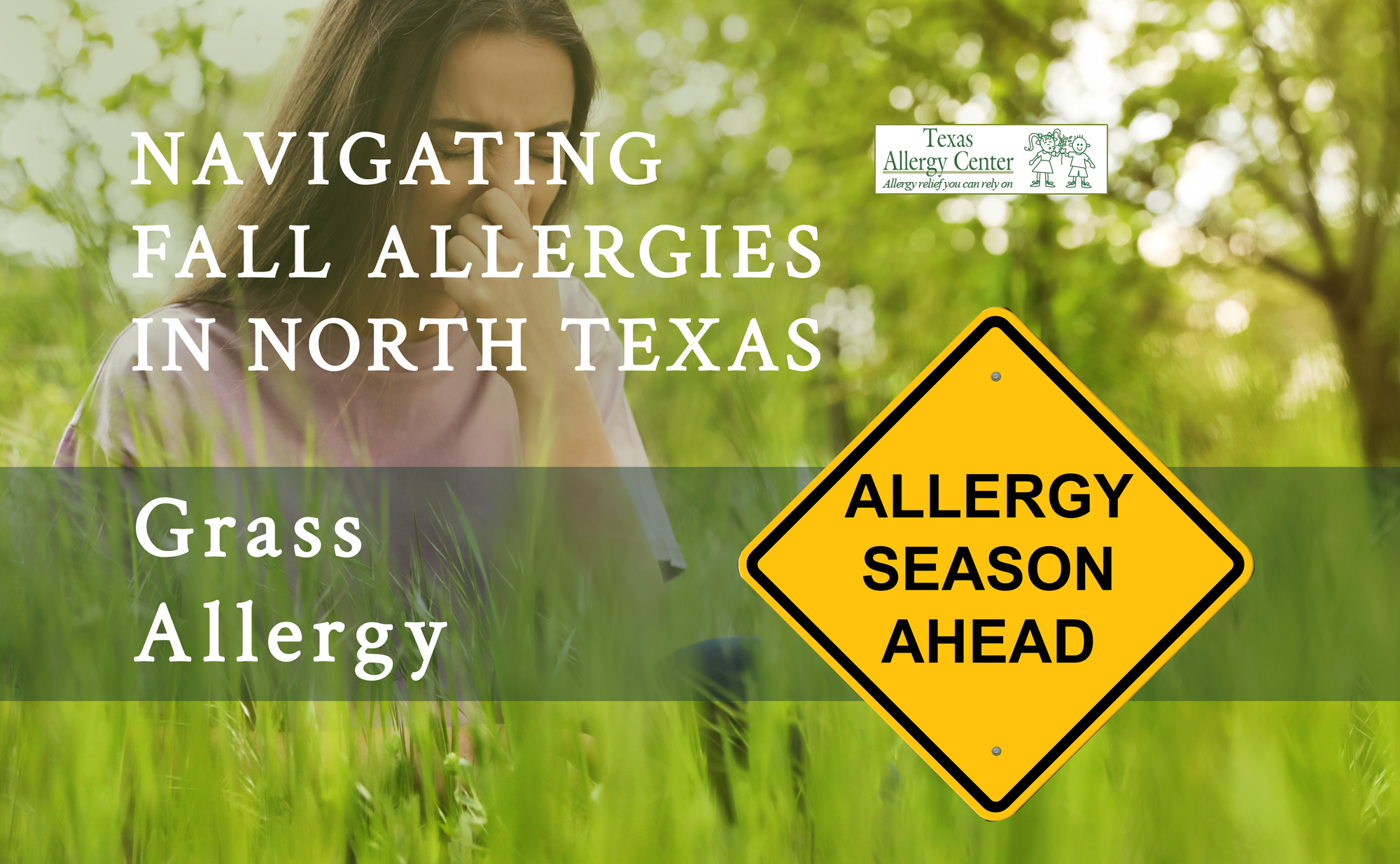
19 Sep Texas Allergy Center Helps You Navigate Fall Allergies in North Texas: Grass Allergy
As the vibrant colors of summer give way to the golden hues of autumn in North Texas, many people look forward to cooler temperatures and outdoor activities. However, for individuals who suffer from grass allergy, the fall season can bring a new set of challenges. Various grasses release their pollen, triggering allergic reactions in susceptible individuals creating a common problem in our region of the Lone Star State. Let’s explore the causes, symptoms, and management strategies for grass allergy during the fall season.
Grass allergies, also known as hay fever or allergic rhinitis, are allergic reactions triggered by pollen from grasses. In Texas, numerous grass species release pollen particles into the air during the fall months. When people with grass allergies come into contact with these pollen particles, their immune systems may overreact.
As the temperatures become milder and more pleasant, people tend to spend more time outdoors. Unfortunately, this means increased exposure to airborne grass pollen. Additionally, the dry and windy conditions that often characterize the fall season can further facilitate the spread of pollen throughout the air, increasing the likelihood of allergic reactions.
COMMON SYMPTOMS
The symptoms of grass allergy can range from mild to severe and can greatly impact an individual’s quality of life. Common symptoms include:
- Sneezing and Runny Nose: Sneezing is one of the most common signs of grass allergy. Along with sneezing, individuals may experience a runny or congested nose.
- Itchy, Watery Eyes: Allergic rhinitis often leads to itchy, red, and watery eyes, which can cause discomfort and affect vision.
- Coughing and Wheezing: For those with asthma or a history of respiratory issues, exposure to grass pollen can trigger coughing, wheezing, and shortness of breath.
- Fatigue and Irritability: Chronic allergy symptoms can lead to sleep disturbances, leaving sufferers feeling fatigued and irritable.
MANAGEMENT AND PREVENTION
While complete avoidance of grass pollen is challenging, there are several strategies individuals can adopt to minimize exposure and alleviate symptoms:
- Monitor Pollen Counts: Keep track of daily pollen counts. Adjust outdoor activities based on these counts.
- Stay Indoors: On days when pollen counts are high, consider staying indoors, especially during the early morning and evening when pollen levels tend to be highest.
- Keep Windows Closed: Use air conditioning instead of opening windows to keep pollen from entering your living spaces.
- Personal Care: Shower and change clothes after spending time outdoors to remove any lingering pollen particles from your body and hair.
- Allergy Testing and Immunotherapy: Consult an allergist for testing to identify specific allergens. Allergy shots or sublingual tablets can be prescribed to gradually desensitize the immune system to allergens.
Our board-certified allergist and highly trained staff are here to help you enjoy being outdoors in Texas. We will address questions and concerns, and then find treatment and care that is right for you! Get started today.

